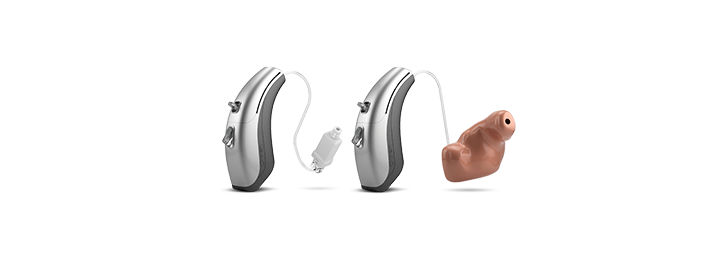Hearing Aid Styles, Confusion Helped By Hearing Aid Manufacturers
Many of the people who come and see us now have done some research on the internet about hearing aids. Often they have a good idea about the different hearing aid models. However, there is often confusion about two particular styles, RIC (Receiver in Canal) and RITE (Receiver in The Ear). Both of these styles are wired receiver hearing aids, where the receiver is at the end of a wire and is placed in position in the ear. The question often asked is, aren’t they the same thing? The answer is yes and no. Let me explain:
Hearing Aid Manufacturers and Their Fancy Designations!
In essence, RICs and RITEs are pretty much the same style of devices just named differently by different hearing aid manufacturers. Of course, with a caveat, sometimes they are not. For instance, Widex offer three style of RIC hearing aids: Passion, which is tiny; Fusion, which is a little bigger; and Super, which is the biggest and most powerful. However, Fusion and Super can be configured as a style that Widex calls Receiver in The Ear. Confused yet?

So How Can a RIC be a RITE?
Above are two Widex Super hearing aids. The one on the left is configured as a RIC or Receiver in Canal. Widex calls it that because the receiver of the hearing aid (the white thing at the end of the wire) goes into your ear canal. On the right is a Super hearing device that is configured as an RITE or Receiver in The Ear. The reason that Widex calls it that is because the receiver actually lives in the portion of the ear mold that sits in the outer ear. A sound tube runs from that receiver along the inside of the piece that goes into your ear canal.
For Widex it is simple logic. In this case their style names are based on where the receiver sits in the ear, and it makes perfect sense to them. Oticon (another Danish Hearing Aid Company) however calls all of their wired receiver devices RITE, whether the receiver sits in the canal or the ear.
So the simple answer is that yes they are pretty much the same style or model of hearing aid, they are just named differently by different manufacturers in most cases (but in others, they aren’t!) Hearing aid companies and their confusing designations!
If you would like more information or you have any questions, call us at 1-440-248-4790.

